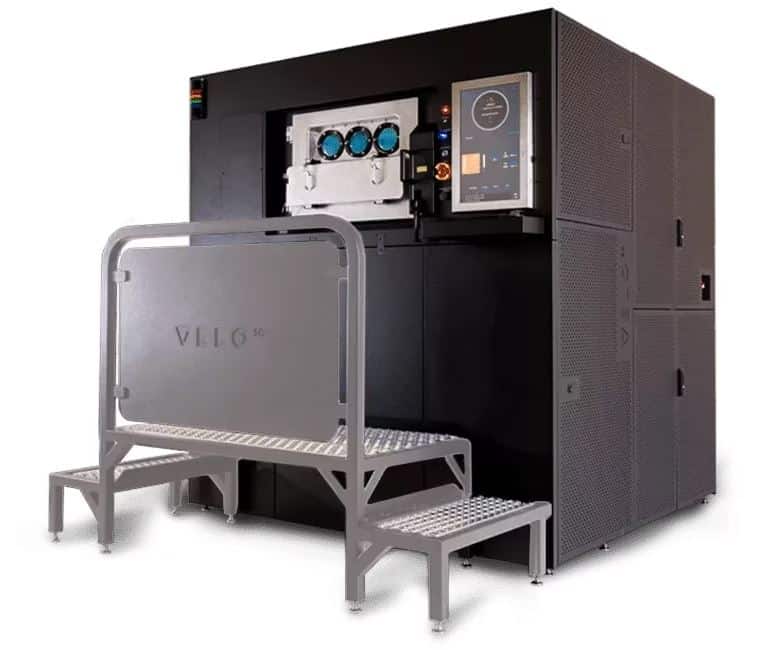Velo3D announced that it has qualified GRCop-42, a NASA-developed copper-chromium-niobium alloy, for use with Velo’s Sapphire range of metal 3D printers. Velo3D, a leading additive manufacturing (AM) startup based in Silicon Valley, specializes in producing AM solutions optimized for the aerospace and space sectors. The company’s first demo parts printed from GRCop-42 will be exhibited at the Velo3D booth (#1508) at the RAPID + TCT conference next week (May 17-19), in Detroit.
More from the News
Texas-based machine shop Knust-Godwin, which already has three Velo3D systems in use, will be the first customer to receive a Sapphire for GRCop-42. Aside from Knust-Godwin, Velo3D noted in a press release that it has several more systems capable of printing with GRCop-42 currently on order. Along these same lines, the CEO and founder of Velo3D, Benny Buller, said that the company has had “extensive demand” for Sapphire machines that can print with the copper alloy.

The third-most-used industrial metal, copper is especially prized by engineers for its resistance to corrosion and thermal conductivity. These qualities make copper ideal for end-use applications involving extreme environments, and are indeed the two main attributes that make the element so crucial to the space sector. In this vein, as the tests conducted thus far have illustrated, the initial intended use of GRCop-42 is for 3D printed rocket engines: the engines get their strength from the chromium and niobium, and their ability to remain consistent after cooldown from the copper.

The “GR” in “GRCop” stands for Glenn Research, in reference to the NASA institute where GRCop-42 and its “predecessor”, GRCop-84, were created. As noted in a 2019 academic paper on the application of GRCop-42 in 3D-printed combustion chambers for rocket engines, NASA started studying the use of copper-chromium-niobium alloys for conventional production methods in 1987. The initial tests led to GRCop-84 and GRCop-42 being “selected for further development”, which ended up lasting through 2005. During this first phase, GRCop-84 was studied much more thoroughly than GRCop-42.
The next phase of testing these materials, for use in AM applications, began in 2014, when NASA engineers started using GRCop-84 in laser powder bed fusion (LPBF) production of combustion chambers. In 2018, NASA began similar testing with GRCop-42, at which point the latter alloy quickly started to gain favor with engineers. In another 2019 research paper, the authors concluded, “In this study, MSFC [Marshall Space Flight Center] and GRC [Glenn Research Center] demonstrated that GRCop-42 is a readily printable alloy that can be additively manufactured into fully dense components with consistent properties at higher throughput rates than its predecessor, GRCop-84.”
Velo3D is one of the first companies able to sell machines capable of working with this alloy, which further solidifies the company’s place among the leaders of the space AM sector. And although GRCop-42 is so far being sought for this particular purpose, now that systems that are capable of working with it are commercially available, new possibilities for the alloy’s use will no doubt be explored. This development is a good reminder of how long in the making has been the payoff that the 3D-printing industry, as a whole, is now finally starting to see.
Subscribe to AM Chronicle Newsletter to stay connected: https://bit.ly/3fBZ1mP
Follow us on LinkedIn: https://bit.ly/3IjhrFq
Visit for more interesting content on additive manufacturing: https://amchronicle.com/
Images courtesy of Velo3D


